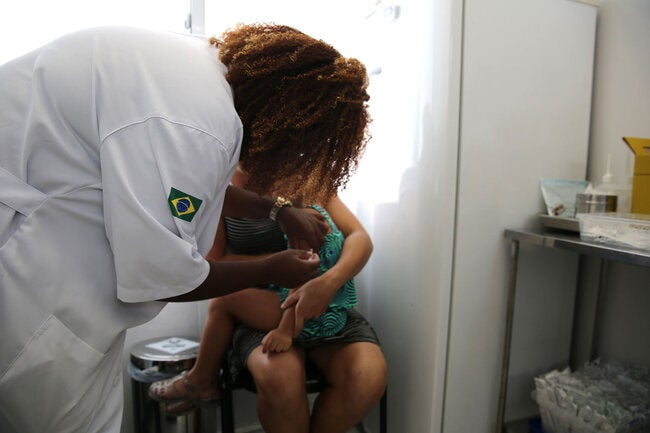
Washington, DC, February 4, 2025 (PAHO) – The Pan American Health Organization (PAHO) has issued a epidemiological alert regarding yellow fever in the Americas due to the recent increase in confirmed human cases in several countries in the region and a change in the geographic distribution of the disease.
This increase was observed in the last months of 2024 and the first weeks of 2025. A total of 61 cases of yellow fever were confirmed in 2024, of which 30 resulted in death. This number exceeds the 58 cases of yellow fever reported, including 28 deaths, between 2022 and 2023 in Bolivia, Brazil, Colombia and Peru. In January of this year, 17 additional cases were reported, with seven deaths.
While in 2024 cases were mainly concentrated in the Amazon region of Bolivia, Brazil, Colombia, Guyana and Peru, in 2025 the disease began to spread to areas outside this area, including the state of São Paulo, Brazil, and the department of Tolima, Colombia. Peru has also reported a fatal case. PAHO warns that other countries could also be affected.
Yellow fever is a serious viral disease that can be fatal, especially in its most severe form. This increase in cases highlights the urgent need to intensify efforts to prevent the spread of the virus, strengthen clinical management (with emphasis on early detection and treatment of severe cases), and improve epidemiological surveillance in high-risk areas.
PAHO recalls that vaccination remains one of the most effective tools to prevent and control yellow fever. In 2024, most reported cases were in people who had not been vaccinated. In this regard, PAHO urges countries to continue strengthening their vaccination programs and take appropriate measures to inform and protect travelers to high-risk areas.
Given the changes in the modes of transmission of the virus, PAHO stresses the need to maintain active surveillance, especially in areas close to the affected areas, in order to detect any suspected cases early and ensure timely isolation and treatment.
Main recommendations:
- Enhanced surveillance: quickly detect any suspected case, even in traditionally unaffected areas.
- Universal vaccination: ensure that at least 95% of people in high-risk areas are vaccinated.
- Laboratory diagnosis: Perform virological diagnostics by PCR during the first 7 to 10 days of illness, or by IgM ELISA during the convalescent phase, with cautious interpretation due to cross-reactivity in areas where other flaviviruses circulate.
- Clinical management: Strengthen early detection and specialized monitoring of serious patients as a key measure to save lives.
- Epidemic preparedness: Review and update national and subnational vaccine inventory to plan for rapid emergency response.
Since 1970, yellow fever has re-emerged as a public health threat in the Americas. The disease is endemic in 13 countries and territories in the region, causing outbreaks and deaths. In 2014, the virus spread beyond the Amazon basin. Some attribute this spread to changes in the interactions between monkeys, mosquitoes, and humans.
PAHO continues to closely monitor the situation in order to provide the most up-to-date information and best practices to mitigate the impact of the disease, ensure a coordinated response among countries in the region, and offer technical and strategic support for the prevention and control of yellow fever.
